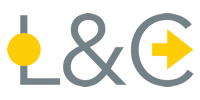Just one week ago we published our white paper, Ex Tenebris Lux, in which we suggested that organizations have a great opportunity to rethink their organization structure and processes. We suggested that in today’s situation there’s an opportunity to view the changes necessary today as the foundation for new ways of doing things once the disruptive force of the pandemic is past, the new new-normal.
RAPID RESURRECTION?
The first wave of organizations to emerge from lockdown
In Quebec on Sunday2, at the Premier’s daily briefing, Dr. Horacio Arruda, National Director, Public Health for the Province, confirmed that plans are being made to allow organizations that can show they have re-thought their ways of working to be the first to be allowed to emerge from the lockdown. This public health specialist suggested that we need to transform how we work, provide better measures of protection from infection for our people, and use the “pause” in activity to find a better work-life balance. It seems likely that public health authorities in other jurisdictions are thinking the same thing, and that the doorway to a swift emergence from the current confinement is through a sensible restructuring. Yet another reason to rethink how we do things, move ahead, and make the appropriate changes.
In the short term, depending on the organization, these changes will probably involve reducing office space and providing more distance between workstations. This can frequently be combined with designating certain positions for permanent distant-working, and/or rotating team members through the office on a workstation hoteling basis. A number of internal and external meetings and conferences can be run at a distance as they are now, and face-to-face activities reduced considerably. These adjustments should not be hard to undertake: they are not perfect pandemic-proofing but will greatly reduce employee, organizational and social risk.
In the longer term many are also looking at where they can innovate, at things like…
- reviewing their organizational structure and processes,
- whether there’s a need to redesign their product or service and
- possibly changing their sales and marketing processes.
As the new plan becomes clear, new ways of working and the new challenges of the team can be factored into a plan for orchestrating the changes.
All of us are now likely to be more sensitive to the possibility of a future pandemic, as well as being much more aware of how Covid 19, the flu and colds get passed between us and how their transmission can be minimized: we know the kinds of changes we need to make. Better yet, it seems likely that in most cases these new ways of working will reduce costs for organizations through reducing the general overhead expense of office-space, entertaining, and travel, while at the same time offering an improvement in working conditions for many.
While these kinds of changes will be easier to carry out for office-based businesses, manufacturers, retailers, restaurants and the like will be able to apply the principles of social distancing to their own circumstances.
While thinking through these adjustments it’s worth considering, as we suggested earlier, the changes we should look for in the broader context in which organizations will be operating. No one can be sure exactly how things are going to unfold, but by way of illustration it seems possible that…
- People will come to view where they live differently. In our old normal, where people lived was to a large extent dictated by where they had to go to work. People were, in effect, tethered to their place of work and needed to live within reasonable travel time of that place. This partly explains the high-prices and popularity of urban and suburban apartments and houses. It could be that, with more people working primarily from home and needing to travel only occasionally to “the office”, out of town regions may become increasingly popular as places to live and work
- Business people and expatriates will find travel more restricted and more expensive. We may all come to view long distance travel differently, and the renaissance of the airline industry may well come with roomier aircraft but more expensive ticket prices
- Now we have seen the exceptional reduction in pollution associated with social distancing we may become a lot less tolerant of its return. At the very least, we may see an acceleration of electrification and a growing intolerance of processes that emit high levels of CO2.
None of this is certain but any combination of changes such as these could dictate how an organization will adapt. What is clear is that things will change.
One of the cornerstone models for understanding organizational change was developed by Kurt Lewin in the 1940s and still holds true today. His model is known as the Freeze, Unfreeze, Refreeze sequence, which refers to the three-stage process of change that he describes. Lewin, a physicist as well as a social scientist, explained organizational change using the analogy of changing the shape of a block of ice.

